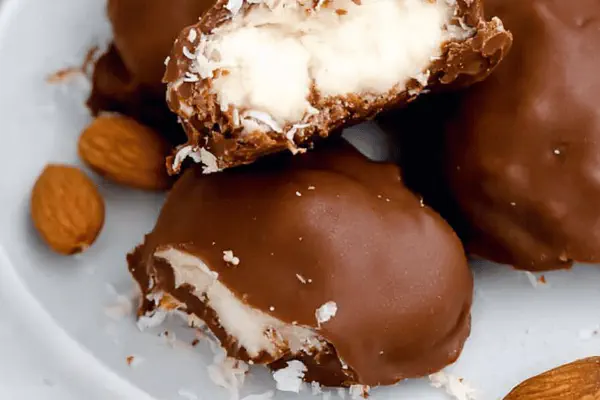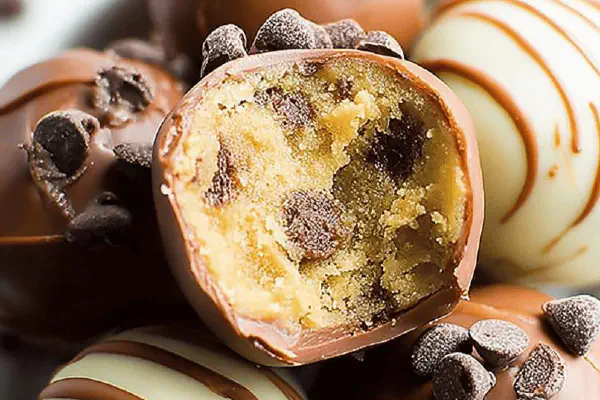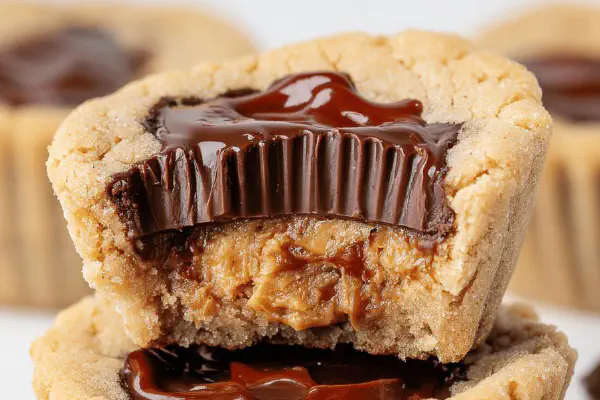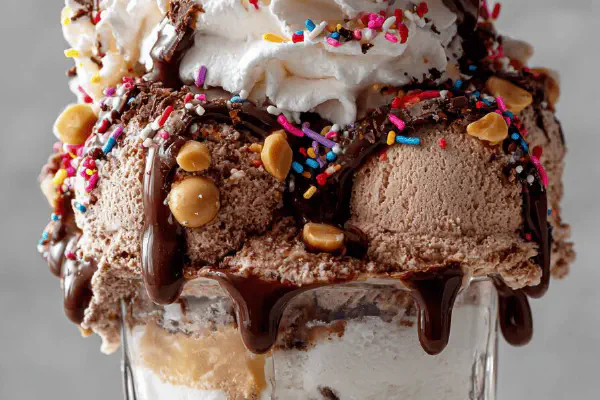Chunky Peanut Butter Chocolate Fudge
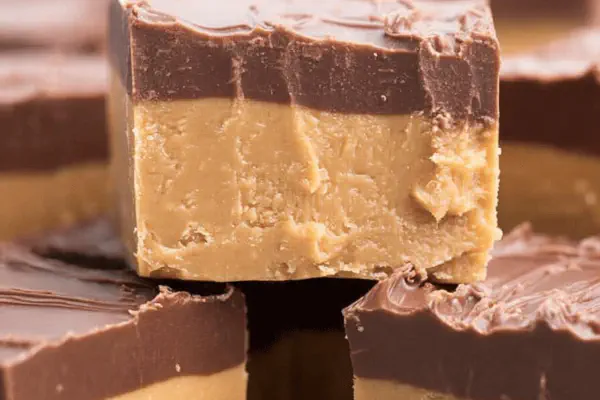
By Emma
Certified Culinary Professional
Ingredients
- 6 tablespoons unsalted butter softened, divided
- 1 1/4 cups peanut butter creamy or chunky
- 3/4 cup almond butter swapped for 25% peanut butter amount
- 2 teaspoons vanilla extract
- 4 cups sifted powdered sugar
- 1 1/2 cups semisweet chocolate chips
- 1/4 cup sweetened condensed milk
- 1/4 cup heavy cream
- 1/3 cup chopped roasted peanuts optional crunch boost
- Parchment paper for lining pan
About the ingredients
Method
Peanut Butter Layer
- Butter softened but not melted, mix peanut butter and almond butter until near uniform. Not perfectly smooth, a bit of chunkiness is how it should feel. Vanilla added now, stir till fragrant. Patience here. Slowly dump powdered sugar in batches, one cup at a time. Wooden spoon work best; only after no more dry lumps. Avoid dust clouds of powdered sugar everywhere. The mixture should hold shape when lifted with spatula but not crumbly dry. Press evenly into parchment-lined 8x8 pan. Use spatula’s flat edge, push corners down firmly. Set aside.
Chocolate Layer
- In heat-safe bowl, chop chocolate chips if large. Butter scant—use 3 tablespoons here versus common 5—plus condensed milk and heavy cream for silkiness instead of just butter. Microwave 40 seconds, stir to gauge melt progress. Heat in 15-second bursts, stir fully between. Look for thick, glossy liquid without graininess. Add chopped peanuts in last stir—surprise crunch hits. Spread immediately over peanut butter base with offset spatula. Even strokes, thin enough for texture contrast but thick enough for snap.
- Cover pan loosely with foil or lid. Refrigerate minimum 115 minutes. Check edges; fudge should yield slightly to finger but remain solid. If too soft, extend chilling 10 to 15 more minutes. Remove fudge using parchment flaps. Cut while cold but not rock hard. Use sharp knife, warmed blade if needed. Press, don’t saw; clean blade after every few cuts prevents tearing. Store in airtight container. Best served just a bit chilled—not freezer solid, or lost flavor.
Tips and Troubleshooting
- Softened butter matters more than melted. Butter completely melted and hot ruins texture. Sifting powdered sugar prevents gritty fudge. If gluten-free needed, swap sugar for erythritol blend, but reduces sweetness slightly. Stir chocolate mix well—graininess means undercooked or overheating. Heavy cream thickens chocolate topping pleasantly, condensed milk adds shine and sweetness. Almond butter swap adds depth but watch for softer set; peanut butter’s saltiness balances sweet layers. Crunchy roasted peanuts optional but highly recommended—adds dimension you’ll crave.
- No thermometer needed—feel and sight rule. Microwave buzzing slows, chocolate dull yet glossy—perfect spot. Confused about set? Press lightly with spatula; if sticks, chill more. Melted butter in peanut base gives greasy finish, avoid heating butter directly with peanut butter. Just soften and stir vigorously instead. Get yourself a good wooden spoon; plastic spatulas can catch sugar crumbs and cause mess. In a pinch, metal offset spatula smooths layers best but cautious not to scratch pan or tear parchment.
Cooking tips
Chef's notes
- 💡 Butter softened never melted—aim for pliable but not warm. Melted butter kills fudge texture, makes greasy finish. Use wooden spoon only; plastic spatulas trap sugar powder, cause clumps. Add powdered sugar slow, one cup, watch dust cloud risk. Mixture should hold shape but not dry crumble. Pat into pan firmly, check corners so chocolate layer won’t seep below. Almond butter swap adds nuttiness but softens set—adjust fridge time if needed.
- 💡 Chocolate layer needs close watch microwaving. Start 40 seconds, stir fully. Then 15-second blasts with stirring. Look for thick glossy texture; graininess means underheated or overheated. Add chopped roasted peanuts last stir, fold quickly. Spread right away, thin but covers base evenly. Use offset spatula with even strokes, avoid scraping parchment. Cold fudge cuts better with sharp knife, warm blade prevents tearing squares. Press don’t saw cuts; clean blade for neat edges.
- 💡 No thermometer use here; rely on senses. Microwave buzzing slows down. Chocolate dulls yet looks glossy, ready to stir. Peanut butter layer yields slightly when pressed; firm enough to support chocolate but not rock hard. Extend chilling 10-15 minutes if fudge too soft, test edges gently with finger. If fudge sticks to spatula or over wet, more chill. Watch for buttery greasy signs in peanut base—means over softened or melted butter. Mix vigorously without heat for smooth texture.
- 💡 Substitutions—swap powdered sugar for erythritol blend if gluten-free but expect less sweetness. Nut butters like sesame possible but change texture massively. Vanilla extract critical despite small amount for flavor balance. Semisweet chocolate chips best; bittersweet or milk chocolate shift sugar balance. Heavy cream adds thickening and shine to chocolate topping; condensed milk replaces some butter to keep moist yet glossy. Chopped roasted peanuts optional but add dimension and texture contrast between layers.
- 💡 Layer assembly—press peanut butter base evenly with spatula’s flat edge, corners pushed firmly to avoid gaps. Spread chocolate topping warm but not hot to avoid melting peanut layer underneath, spreads smoother. Cover loosely with foil or lid then chill uncovered to prevent water condensation on chocolate, which dulls shine. Cut fudge while cold but not rock solid or fudge cracks. Wrap leftovers airtight; fudge loses moisture fast or hardens. Store chilled short term, avoid freezer for flavor retention.
Common questions
How do I know when chocolate layer is done?
Look for thick shiny liquid, no grainy bits. Microwave buzz slows, stir fully at short intervals. Too hot or underdone changes texture quickly. Peanuts add crunch last minutes. Visual and tactile cues better than timers.
Can I replace almond butter with another nut butter?
Yes but texture varies big time. Sesame or cashew thicken less, change mouthfeel. Almond butter adds nuttiness and softness so fridge time might change. Taste shifts depending on sweetness and saltiness of substitute.
Fudge too soft after chilling, what now?
Chill longer 10 to 15 minutes increments. Test edges with finger for slight give but solid. Softness linked to butter melting or almond butter soften effect. Avoid melted butter initially helps. If still soft double-check sugar ratios and chilling temp.
How long does fudge keep, best storage?
Airtight container fridge for about 5 days good. Wrap cut edges well to prevent drying. Freezing possible but texture suffers, fudge gets crumbly or dulls chocolate gloss. Room temp not recommended unless cool place. Avoid condensation on chocolate to keep shine.
